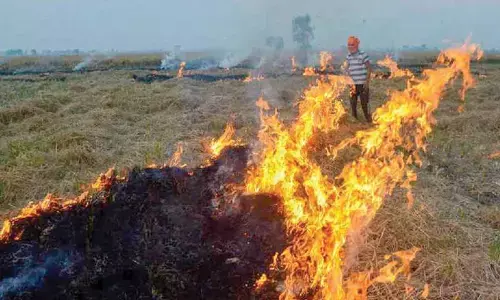Deforestation in India a serious threat to bats

Deforestation In India A Serious Threat To Bats. With increasing human population and rise in agricultural land use in India\'s Western Ghats, a number of bat species are findings it difficult to adjust with the changed landscape brought about by deforestation, says a new study.
London: With increasing human population and rise in agricultural land use in India's Western Ghats, a number of bat species are findings it difficult to adjust with the changed landscape brought about by deforestation, says a new study.
.jpg)
The researchers found that while bats do not favour tea plantations, some species can survive in coffee plantations.
To assess the impact of rainforest fragmentation and plantations on bats, a team of researchers from National Centre for Biological Sciences, Bangalore, Nature Conservation Foundation, Mysore, and University of Leeds in Britain surveyed bats in the souther Western Ghats.
The researchers found that several species are having difficulty in the transformed landscape - but also found hopeful signs that remaining forest fragments and wildlife-friendly agriculture could offer a lifeline.
"The Western Ghats region is the eighth most biodiverse place in the world but has the highest human population of any of the biodiversity hotspots,” said professor John Altringham from University of Leeds in Britain.
"Historical land use change and development has left only six percent of the original habitat in the region. By looking at bats -- which are excellent bioindicators -- we are able to learn not only what these changes in the environment mean for bats, but also for wildlife in general," Altringham pointed out.
The researchers used geographic information system (GIS) computer modelling to look at the relationships between the presence of 10 different bat species and the features of the habitats in which they were found.
The bats were located by a combination of capture and recording of echolocation calls.
The researchers used the information gathered over three years to build 'habitat suitability models', to predict what areas would be good habitat for each species across the entire study area.
"Most species preferred forest fragments and the rivers associated with them. No species favoured tea plantations, though a number could make use of them,” lead researcher Claire Wordley from University of Leeds pointed out.
"Two of the bat species we studied, the lesser woolly horseshoe bat and the lesser false vampire bat, were never seen in tea plantations,” Wordley noted.
"Further deforestation would be a serious threat to these species, but the good news is that they are, for the moment, surviving in small forest patches, riverine habitats and in coffee plantations,” Wordley said.
The study was published in the journal Biological Conservation.




















